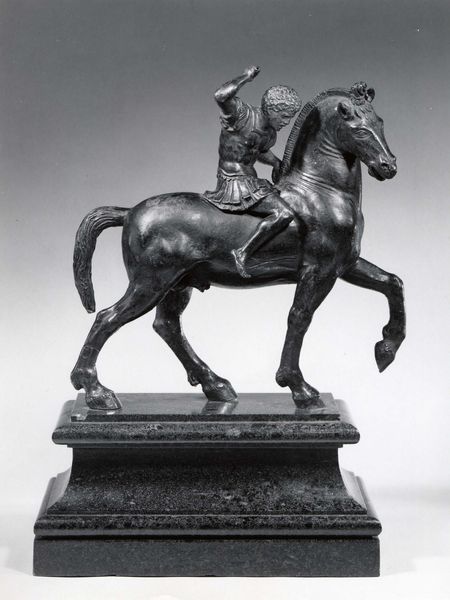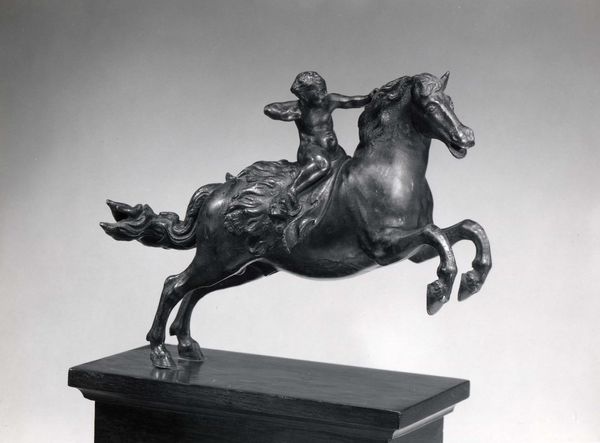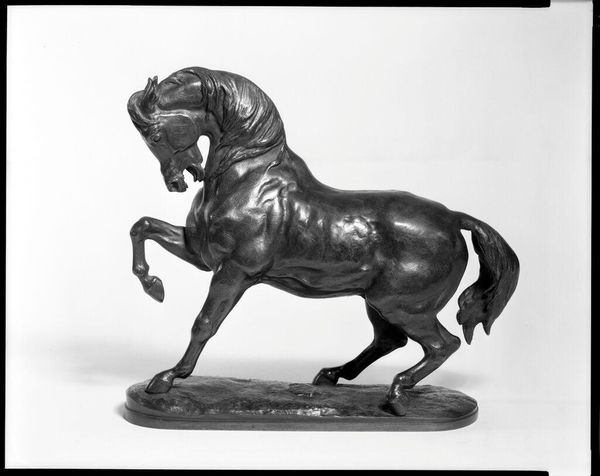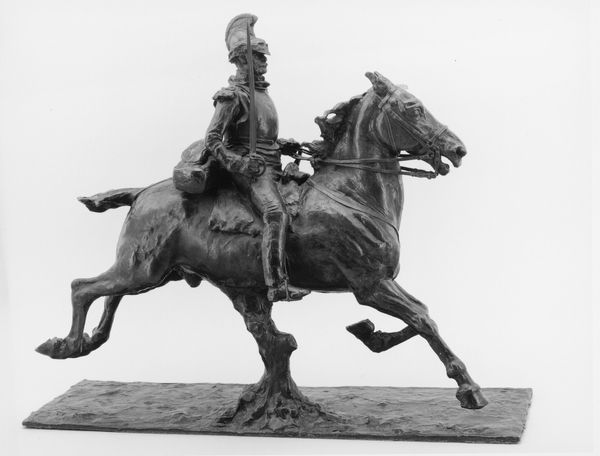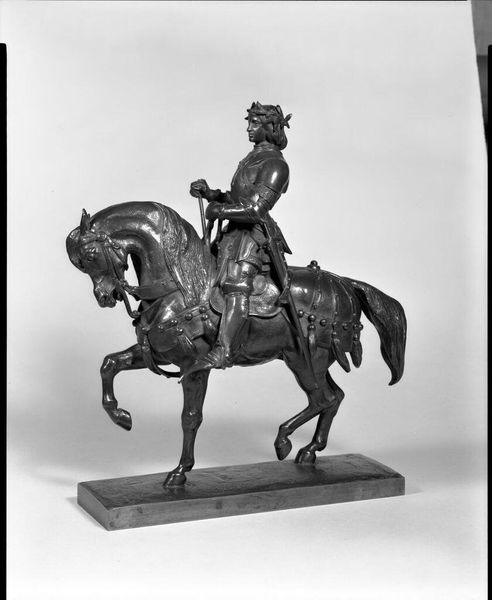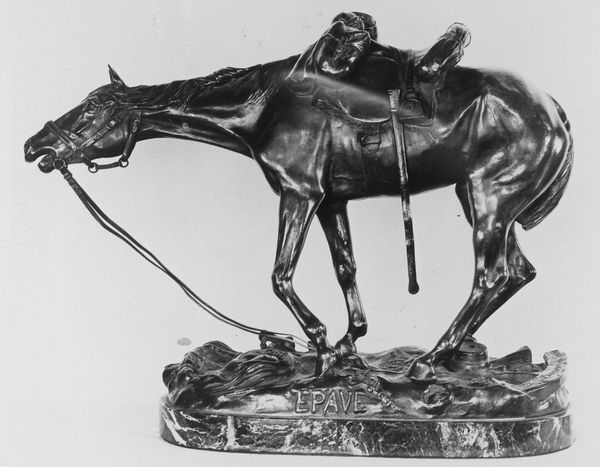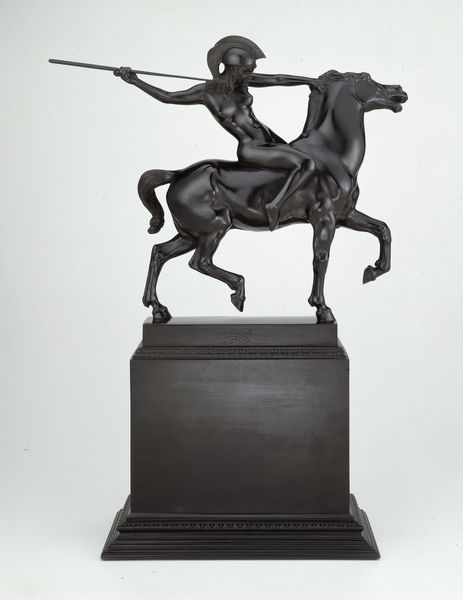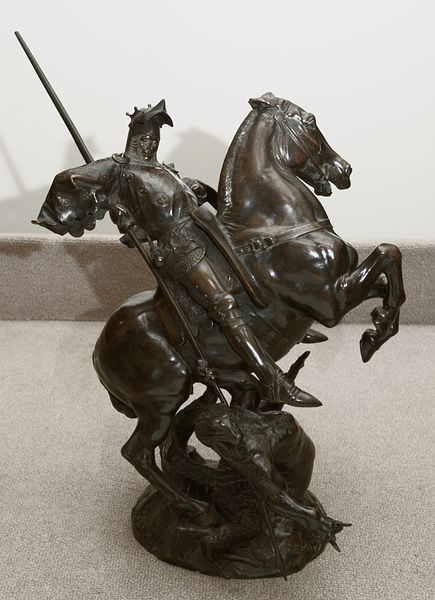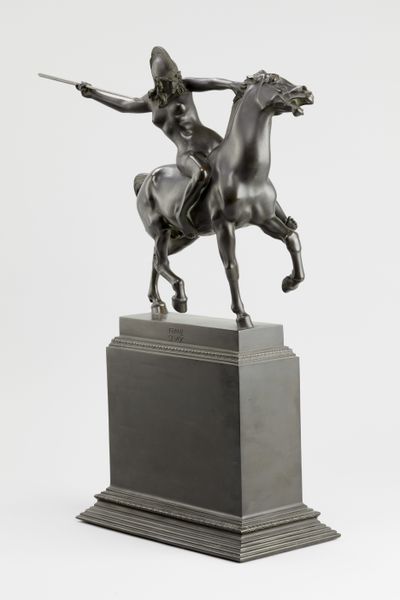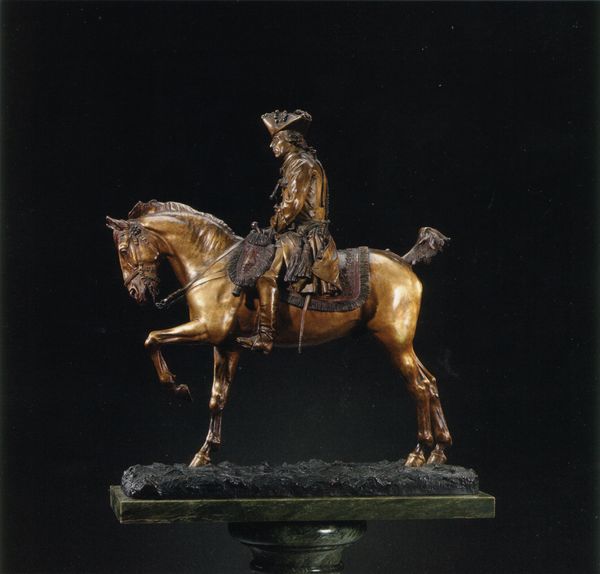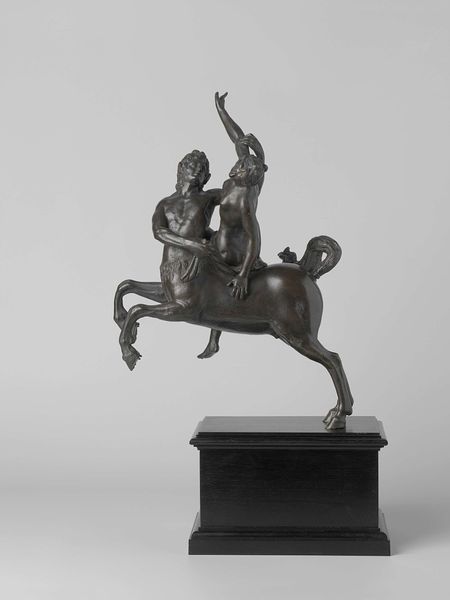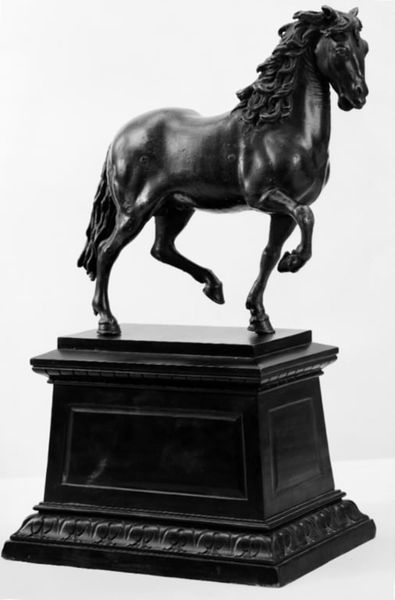
Dimensions: Overall: 23 × 21 1/2 × 8 1/2 in. (58.4 × 54.6 × 21.6 cm)
Copyright: Public Domain
Curator: Isidore Bonheur’s bronze sculpture, “Boy and Rearing Stallion,” was created sometime between 1855 and 1883. You can find this dynamic artwork on display at the Metropolitan Museum of Art. Editor: The initial impression is quite striking; the energy and tension are almost palpable. The rearing horse conveys a sense of wild power, contrasted by the boy's seemingly precarious hold. It evokes questions about control, freedom, and the relationship between humanity and nature. Curator: Bonheur, as an animalier sculptor, demonstrates acute attention to the musculature and the dynamic balance of both figures. What makes this piece so engaging is how Bonheur captures the bronze-casting process, allowing for the metal's qualities to merge with a narrative scene, resulting in high detail but with an earthy quality. The final product suggests a unique understanding of his material. Editor: It’s interesting to consider how Romanticism, which heavily influenced the artist's style, often idealized nature, and how those themes reflect or clash with industrial progress, shifting gender dynamics, and even rising nationalism throughout the period. Where does this symbol of man conquering nature truly lie within this context? Curator: It does make you think about the social conditions of the late 19th century. You can easily observe Bonheur's technique. The lost-wax casting method, a fairly standard practice, allows for this amazing fidelity. However, bronze's significance at this period, as a material linked with power and permanence, really speaks about its ability to immortalize its subject in an era fascinated by history and the recording of its narrative through statuary. Editor: It's undeniable that art plays an instrumental role in defining societal norms and projecting power during those transformational eras, often idealizing hegemonic relationships between social structures. Consider, for instance, themes of the dominance and mastery as an implicit ideological component within the representation. It challenges us to view the sculpture through lenses of gender, class, and colonialism. Curator: That is fascinating. Viewing the composition through those power dynamic lenses makes you re-think its deeper symbolism! Editor: Absolutely. The artwork goes beyond simple aesthetic appeal and is revealed as a lens reflecting on larger questions of societal control. Curator: A reminder of how context enriches art interpretation! Editor: Precisely. It pushes us to reconsider received narratives and examine hidden narratives in this dynamic bronze.
Comments
No comments
Be the first to comment and join the conversation on the ultimate creative platform.


